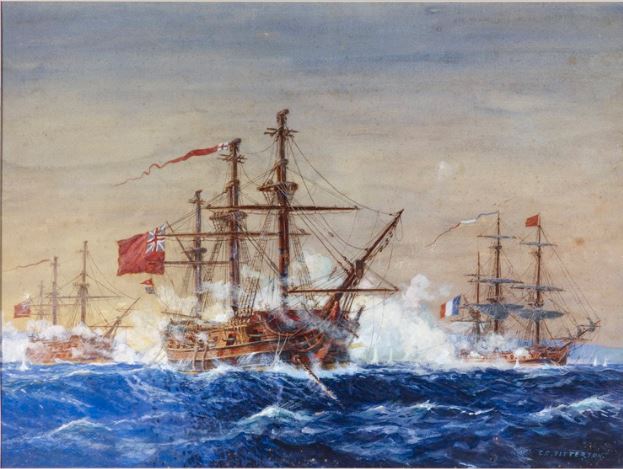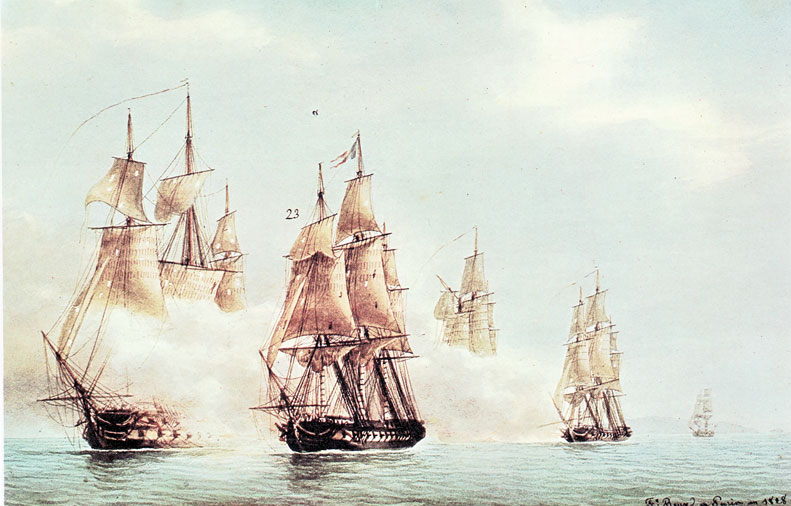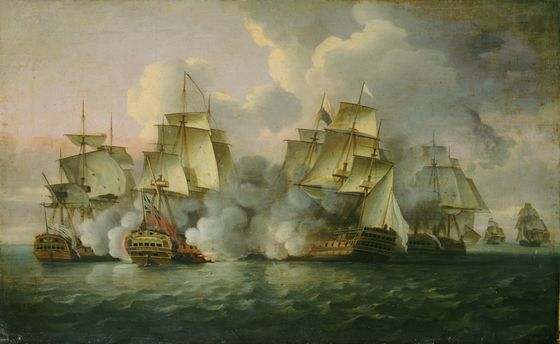The Battle of Algoa Bay
A horseshoe found in a parking lot in Grahamstown led to memories of an epic tale
Recently, I created a video describing some remarkable horseback journeys that took place during the late 1700s and early 1800s in the Eastern Cape. I was prompted to explore this topic after I found a horseshoe in a parking lot in Grahamstown. One of the notable rides I recounted was that of a young officer on horseback in 1799. He undertook a journey to Cape Town to notify the authorities of a naval battle that had occurred in Algoa Bay.

Naval Battle in Algoa Bay 20 September 1799 by Clarence Titterton
The only battle ever fought in Algoa Bay
This naval engagement, which took place on September 20th, 1799, is the only recorded such event in the history of Algoa Bay. It happened during the Third Frontier War, a time when British forces were sent to suppress a Boer uprising. Tensions were high in the frontier regions, with Boers seeking independence from British rule and indigenous Khoi Khoi and Xhosa groups carrying out raids on outlying farms.
The participants in this maritime clash were two vessels dispatched to Algoa Bay to deliver supplies and a prefabricated blockhouse for the ongoing campaign. These ships were the HMS Rattlesnake, a 16-gun Sloop, and the HMS Camel (formerly HMS Mediator), a 24-gun transport carrying the blockhouse and campaign provisions.
Two vessels, one ruse, and a clash that echoed through the waves of history
On the afternoon of September 20th, with most of their crews ashore supporting land operations, a ship appeared in Algoa Bay flying the Danish Jack from its mizzen. Lieutenant Fothergill, left in charge aboard the Rattlesnake, was alerted by a coastal schooner, the Surprise, whose captain sensed trouble and signaled the Rattlesnake.
A guard boat dispatched from the Camel confirmed that the approaching ship was a large frigate flying the Danish Jack as a ruse. It was, in fact, the French Frigate La Preneuse, under Captain Jean-Marthe-Adrien l’Hermite. Fothergill ordered action stations and fired a warning shot across La Preneuse’s bow, but the vessel failed to respond.

A Watercolour portrait of Prudente, by François Roux, commissioned by Willaumez
At 8:30 that evening, the French ship had approached to within 500 yards. Fothergill ordered a broadside to be fired from the Rattlesnake, and the Camel joined in soon afterwards. The battle ensued, with La Preneuse focusing its fire on the Camel, inflicting substantial damage. After three hours of intense fighting, the Camel was in dire straits, its crew battling to pump water out from below the waterline. La Preneuse then turned its attention to the Rattlesnake, engaging in a fierce exchange until 3:30 a.m., when La Preneuse broke off and retreated towards Bird Island, visibly damaged.
A desperate struggle against the elements and a relentless adversary
Meanwhile, attempts from shore to aid the ships were hindered by rough seas. Despite the ineffectiveness of their shore-based cannons, the defending forces managed to create the illusion of a heavily fortified shoreline.
The engagement resulted in three fatalities and 14 wounded. An urgent dispatch rider was sent on horseback to Cape Town to relay news of the battle.
A race against time as a lone rider galloped towards Cape Town with news of the battle

HMS Mediator in action December 1782
The French frigate, now badly damaged, was intercepted by HMS Jupiter about 200 nautical miles south of the Fish River mouth. Bad weather thwarted Jupiter’s efforts, allowing La Preneuse to escape. Eventually, on December 11th, the HMS Tremendous and HMS Adamant intercepted La Preneuse outside Port Louis, Mauritius. The French ship ran aground and was boarded, its crew captured, and the vessel subsequently burned.
Reflecting on this historical event, the navigation and strategic decisions made by both sides are particularly impressive, given the technological limitations of the era. The ability to locate and engage a ship weeks after it departed Algoa Bay demonstrates the ingenuity and foresight of naval operations during this period.
Alan
